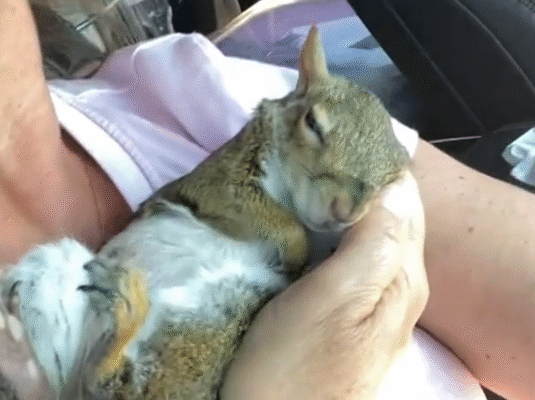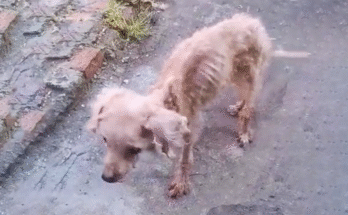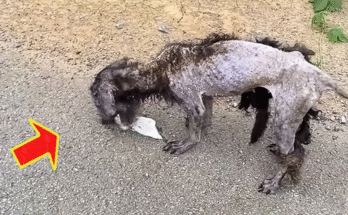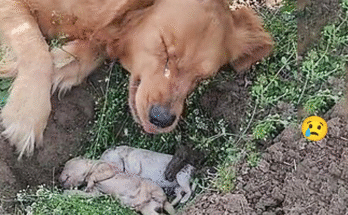It was a warm spring afternoon in the small town of Fernbrook. Birds chirped overhead, the scent of wildflowers floated through the breeze, and the hum of bees added a gentle rhythm to the countryside. For Clara, a retired schoolteacher and lifelong animal lover, this was the kind of day she cherished most—when she could walk through her garden and feel deeply connected to nature.
Clara had lived on the edge of town for decades, her house nestled beside a meadow and a line of tall trees that hosted a variety of wildlife. Her days were peaceful, and her garden often buzzed with life: birds, butterflies, rabbits, and squirrels.
That afternoon, while watering her roses near the fence that separated her property from the woodland beyond, Clara heard something strange—a frantic rustling sound, followed by high-pitched squeaks. She paused, listening. It wasn’t a bird. It wasn’t a usual animal call. She set her watering can aside and followed the noise to the far end of the yard.
And then she saw it.

A young squirrel, likely just a few months old, was stuck—trapped between two tight wires of her metal garden fence. Its tiny body was wedged in such a way that it couldn’t pull itself forward or backward. It had likely been chasing something or trying to climb through when it got caught. Now it was panicking, its small legs kicking and tail thrashing.
Clara’s heart ached.
“Oh, you poor little thing,” she whispered as she knelt beside it.
The squirrel’s eyes widened, and it squeaked louder. Clara knew she had to be careful. A scared animal—even a small one—could bite or injure itself more if approached the wrong way. But she also knew she couldn’t walk away. It might not survive long in that position, especially if predators or the evening cold arrived first.
She hurried to her shed and returned with thick gloves, a pair of garden shears, and a soft towel.
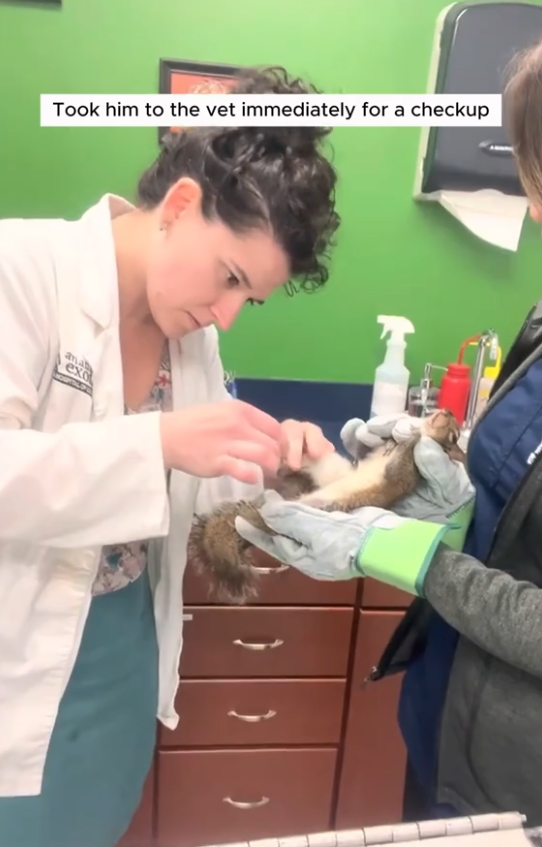
With gentle hands and a calm voice, Clara approached the squirrel again. She laid the towel over its body to soothe it and reduce panic, then carefully examined how it was stuck. One leg had slipped between the vertical wires and twisted slightly, preventing the squirrel from pulling free. Clara used the shears to widen the gap just enough, taking care not to cut too close to the animal.
After several tense minutes, the squirrel’s leg slipped free.
Clara pulled the towel back slightly. The little squirrel didn’t run—it simply collapsed in her gloved hands, breathing fast and shallow. Its body was trembling, and its leg looked swollen.
“You’re okay now,” she whispered. “I’ve got you.”
Instead of setting the squirrel loose right away, Clara decided to care for it until it was strong enough to be released safely. She placed it in a cardboard box lined with an old flannel blanket, made a small water bowl, and called her local wildlife center for advice. They confirmed that she could keep it overnight and bring it in the next day for a check-up, as long as it was warm and undisturbed.
She named him “Rusty.”
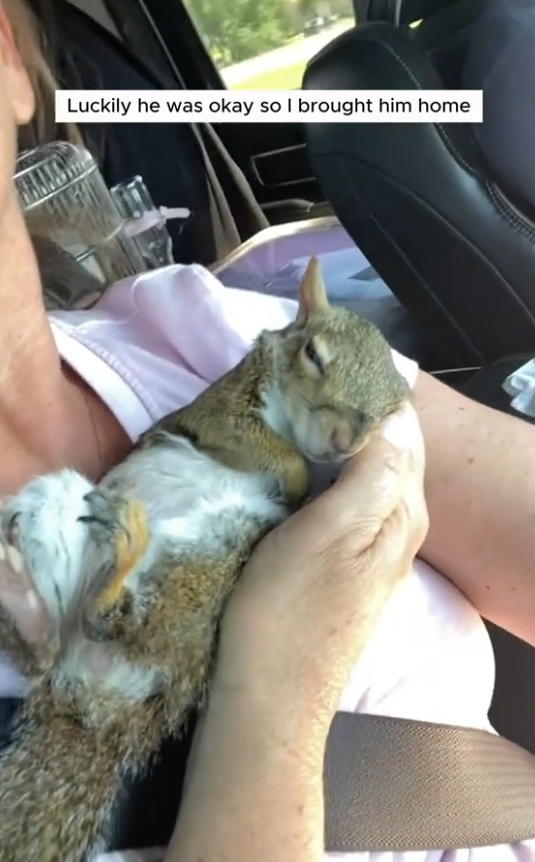
That night, Rusty stayed in Clara’s guest room, curled up quietly in the box. He didn’t eat much, but he drank water and accepted a few sunflower seeds by morning. Clara checked on him every hour and even read a book aloud while sitting beside the box, hoping her voice would calm him.
The next morning, Clara gently placed the box in her car and drove Rusty to the wildlife center on the edge of town. The vet there examined him and found that, aside from a minor sprain and some bruising, he was perfectly healthy.
“He’s lucky,” the vet said. “Another hour or two and it could have been much worse.”
They offered to take Rusty in for observation, but Clara asked if she could foster him for a few days, just until he was strong enough to return to the wild. The vet agreed and provided her with proper food and instructions.
So Clara became Rusty’s temporary guardian.
For the next week, Rusty grew stronger. He began eating more—berries, nuts, and small pieces of fruit. He tried to climb the edge of his box and even began exploring her sunroom, darting behind potted plants and jumping from windowsill to chair.
Clara laughed often. “You’re getting your spirit back, little one.”
Each day, she documented his progress with photos and short journal entries. Friends and neighbors came by to see him, and soon, the whole town was following Rusty’s recovery. Clara never expected a squirrel rescue to bring so much attention, but it warmed her heart to see people so engaged.
Then came the day Clara both hoped for and dreaded.
Rusty was ready to go.
She carried his box back to the spot near the fence where she had found him, the wires now repaired and reinforced to prevent future accidents. With a lump in her throat, she opened the box.
Rusty hesitated for a moment, peeking out cautiously. Then, with one final look at Clara, he leapt into the grass and scurried up the nearest tree. At the top branch, he paused, his little face turned toward her. Clara waved.
“Goodbye, Rusty. Be safe.”
He disappeared into the leaves.
And Then…
Clara returned to her quiet days, but something had changed. The rescue had sparked a passion she hadn’t expected. She contacted the wildlife center again and offered to volunteer. Over the months that followed, she helped care for orphaned rabbits, injured birds, and abandoned raccoons.
Her home, once just a peaceful place for herself, became a healing stop for many animals in need.
Every so often, she spotted a squirrel in her garden—sleek, fast, and with a familiar flick of the tail. She always wondered if it was Rusty, coming back to say hello.
Whether it was or not, she felt his presence often. He had opened a door to a new chapter in her life—one where love, patience, and small acts of kindness made a big difference.
And it all started with a squirrel stuck in a fence… and the woman who stopped to help.
